How to Follow A Six-Part Recipe for Viral Content Success
 On Feb. 26, 2015, BuzzFeed published a post asking one simple question: "What Colors Are This Dress?"
Although the answer seems simple enough, it launched arguably one of the biggest internet memes of all time. And whether you were team blue and black or white and gold, the accompanying image was simply unavoidable, making it’s way onto just about every publisher. It was truly viral content at its best.
This is the kind of success most brands only dream of, and Roman Originals–the retailer behind the dress–saw huge returns. Within a month, their organic traffic increased by 420 percent and their press mentions by a whopping 17,550 percent. The overnight success left many marketers like myself wondering, “What it is about some silly piece of content that can have such a profound impact on our online sharing behavior, and more importantly, can it be replicated?”
Luckily, more and more research is being dedicated to viral content, specifically on what triggers someone to click “share.” In one of his earliest studies that scraped nearly 7,000 New York Times articles, Jonah Berger noted that highly shared posts are typically useful, surprising, and positive, but above all, highly emotional.
On Feb. 26, 2015, BuzzFeed published a post asking one simple question: "What Colors Are This Dress?"
Although the answer seems simple enough, it launched arguably one of the biggest internet memes of all time. And whether you were team blue and black or white and gold, the accompanying image was simply unavoidable, making it’s way onto just about every publisher. It was truly viral content at its best.
This is the kind of success most brands only dream of, and Roman Originals–the retailer behind the dress–saw huge returns. Within a month, their organic traffic increased by 420 percent and their press mentions by a whopping 17,550 percent. The overnight success left many marketers like myself wondering, “What it is about some silly piece of content that can have such a profound impact on our online sharing behavior, and more importantly, can it be replicated?”
Luckily, more and more research is being dedicated to viral content, specifically on what triggers someone to click “share.” In one of his earliest studies that scraped nearly 7,000 New York Times articles, Jonah Berger noted that highly shared posts are typically useful, surprising, and positive, but above all, highly emotional.
Highly shared posts are typically useful, surprising, and positive, but above all, highly emotional.
Click To TweetGet Your Free 'Decoding Successful Content' Infographic
Visualize the SUCCESs formula for viral content with this free infographic with original research from Fractl.How to Follow A Six-Part Recipe for Viral Content Success
Click To Tweet- Simple: Making something simple doesn’t mean dumbing it down; it’s about focusing your message around a single idea (i.e. people should be able to describe your campaign’s key theme in only two or three sentences)
- Unexpected: This is where you want to include something that will gain your audience’s attention. Run of the mill data goes in one ear and out the other; something that challenges an assumption will hold an audience’s attention.
- Concrete: For an idea to be concrete, it presents a difficult concept in a more relatable way. For example, a popular concrete idea you might have heard of is that humans consume enough bottled water in a little more than a day to circle the entire equator with plastic bottles stacked end to end.
- Credible: Along with getting an audience to listen to your message, you also need to convince them to believe it. Make sure to offer facts that are backed by either primary or secondary research.
- Emotional: Although people look for credibility, they also want to feel something. Be sure to trigger an emotional response.
- Generate stories: Individuals should be able to act on your content (i.e. present an idea, let others be able to interpret in their own way).
- Hotel Hygiene Exposed: For one of our clients, we gathered 36 samples from nine different hotels to determine which rooms were the dirtiest.
- Reverse Photoshopping Comic Covers: Superheroes typically boast massive biceps and incredibly tiny waists, so we used Photoshop on behalf of one of our clients to see what these familiar faces would look like if they reflected the average American body type.
- Sexually Suggestive Emojis: For another client campaign, we scraped Twitter to discover which countries have the most flirtatious emoji use around the world.
1. Simple: Roll Out Your Content’s Core Focus in the Easiest Way Possible
For an idea to be simple, it needs to be easily understood, and quickly. To gain your audience’s attention, identify a central theme and make sure your content connects to this idea whenever possible.Gain your audience's attention by connecting content to one central theme
Click To TweetSimplify Content By Setting Clear Campaign Goals
Another easy way to simplify your content is when you’re setting your campaign goal. Do you expect the campaign to drive conversions or do you want it to boost general brand awareness? You’ll also want to make sure your goal is as specific as possible: The more specific you are when setting your goal, the greater the likelihood you’ll actually reach it – and this specificity will help you focus both your content and time. Below is a three-step guide on how to set attainable goals:- Begin with an audit of previous campaigns. Remember that data is your friend, and you likely already have a ton of it at your fingertips thanks to previous campaign metrics. Note any key data points—your new goals should fall somewhere within the same ballpark.
- Evaluate your current position within your industry. If you don’t have a large part of the market yet, consider a goal that only aims for a 2 to 5 percent increase in something. On the other hand, if you already have a large presence in the industry, set a goal that is a little more challenging—you don’t want to miss out on any potential growth.
- Set one major goal, and follow up by outlining two or three other goals that will help you get there. When setting goals for your content, you’ll likely have more than one. For example, if you want a campaign to drive a certain amount of blog traffic, you’ll also want to set smaller goals like earning placements on X,Y, and Z publishers that will help you get there.
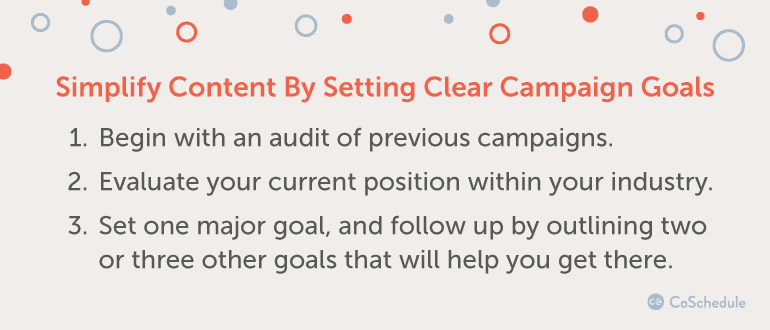
2. Unexpected: Produce Something With a Dash of Shock
Beyond an idea that’s quickly understood, another easy way to earn someone’s attention is to offer content that is shocking. This guarantees an element of surprise, which will drive results because instead of adding to the white noise on the internet, you’re actually breaking through. In the case of Hotel Hygiene Exposed, the results yielded a shocking finding: The nicest hotels actually had the most germs. This made outreach a breeze, with big name publishers like Yahoo taking full advantage of the added shock value with headlines like, “Eww! New Study Finds Expensive Hotels Have More Germs.” Producing controversial content is also a great way to add something unexpected. Below are a few different approaches to controversial content:
Producing controversial content is also a great way to add something unexpected. Below are a few different approaches to controversial content:
- Disprove an easily held assumption: This content often focuses on testing an audience’s beliefs. For example, the Ad Council’s incredibly successful “Love Has No Labels” video used an X-ray machine that featured skeleton couples showing different signs of affection to one another before revealing themselves as either gay, lesbian, or biracial – forcing viewers to rethink any unconscious biases they might have and appreciate that love is love, no matter who is involved.
- Produce something taboo: These ideas center around a topic that isn’t often discussed. Again, the Sexually Suggestive Emoji campaign is a great example because who doesn’t blush a little when they see some of those eggplant combinations?
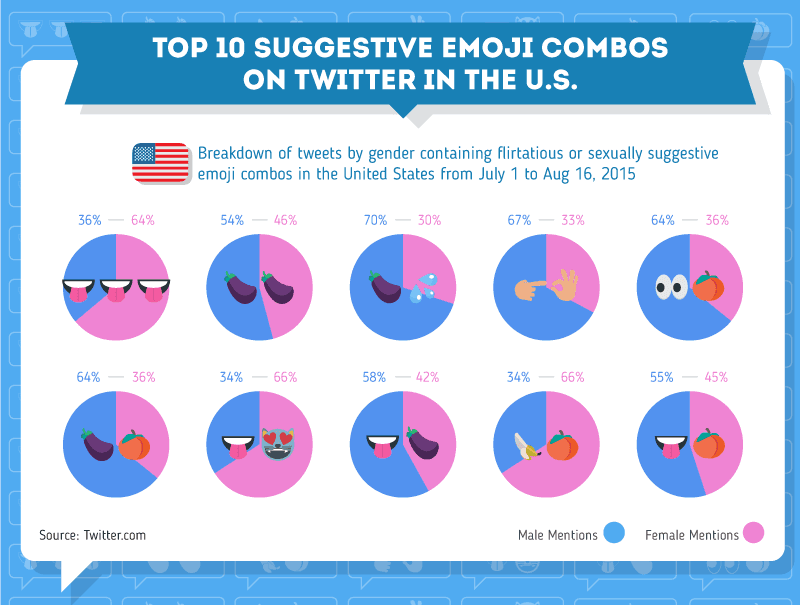
- Stir up a debate: Most controversial ideas would fall under this umbrella, with a majority of these campaigns presenting data from both sides in order to allow readers to drive the discussion. For instance, the campaign in “The Most Prejudiced Places in America” focuses on which areas have the most non-politically correct tweets. The geographic ego bait ignites a discussion because it gives readers the opportunity to offer their two cents on whether or not they agree.
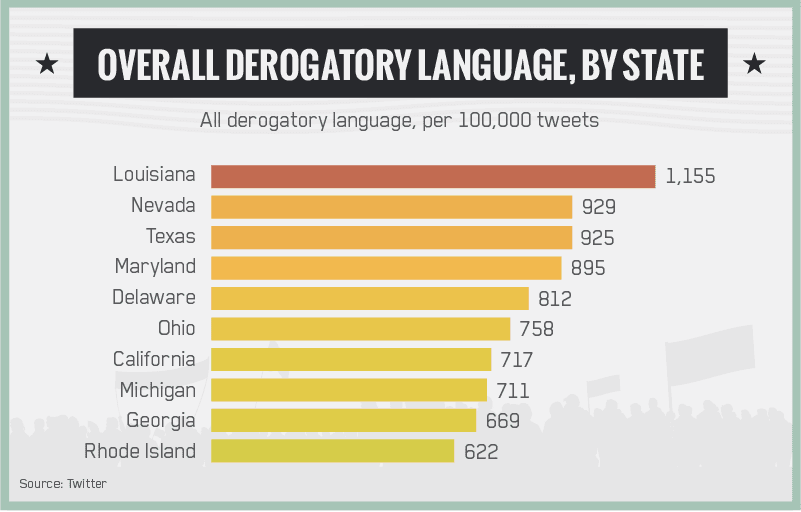 via The Daily Beast
via The Daily Beast
3. Concrete: Difficult Concepts Often Require You to Whip Up More Than One Example
The Heath brothers say something is “concrete” in its ability to be described through sensory language. In other words, your content should be understood using one of the five senses. So how can you do this with online content? Let’s take a moment to review the Velcro Theory about memory. This concept argues that although it is unlikely for someone to totally comprehend – or “grasp” – brand new information, it is likely that they will be able to grasp small bits of information as long as their prior knowledge presents something for this new information to “hook” onto – much like a piece of Velcro. By connecting your content’s new information to things your audience already knows, it makes retention and discussion much easier. In the case of online content, concreteness often stems from being able to visualize new concepts. For example, in Reverse Photoshopping Comic Covers, the core theme of the campaign was to offer a new way to discuss body image issues – particularly with men. When comic book icons like Batman, Iron Man, and Captain America shed their bulging biceps in an effort to look more like an everyday individual, audiences suddenly had a new way to talk about more difficult concepts like body dysmorphia.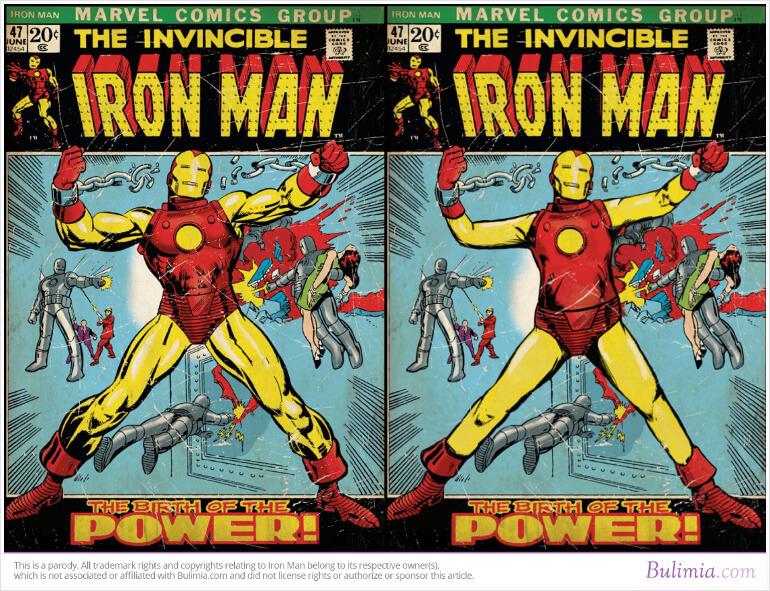
Try Comparing Apples To Oranges
Think of something’s “concreteness” as being able to compare apples to oranges. A great example is this campaign–Data IRL–that visualizes what digital storage size would look like in the form of storage boxes. If you assume 10 megabytes of data is equivalent to one standard storage box, an iPhone’s 4 gigabytes of data suddenly becomes much easier to understand: It’s 400 storage boxes, or–when the boxes are lined up–enough data to stretch nearly the length of 1.5 football fields. via Better Buys
Keep in mind what you can compare more difficult concepts like data storage to is only limited by your imagination. A good jumping off point is by taking a look around you and identifying what you use on a day-to-day basis (think a can of soda or a deck of cards); these are the type of routine items that make something unfamiliar suddenly incredibly relatable.
via Better Buys
Keep in mind what you can compare more difficult concepts like data storage to is only limited by your imagination. A good jumping off point is by taking a look around you and identifying what you use on a day-to-day basis (think a can of soda or a deck of cards); these are the type of routine items that make something unfamiliar suddenly incredibly relatable.
- Piktochart: Relying on the continued popularity of infographics, the application allows users to easily create IGs using themed templates
- Tableau Public: The drag-and-drop platform offers users a wide range of collaborative maps and charts to fool around with
- Infogram: This easy-to-use application allows users to create interactive charts without any coding
- Silk: Another drag-and-drop platform, this is one of the easier tools to use, requiring users to simply upload their data through a spreadsheet to begin building visualizations around it
4. Credible: Garnish Your Content With a Methodology That is Both Reliable and Familiar
Readers want to see content that is trustworthy, and something that is data-driven is a great way to boost authority and earn credibility. Your methodology should be readily available and include the following:- Specifics on your data set, including how, when, and where you collected it
- Any outliers that were omitted in your data
- A list of additional sources (i.e. secondary research)
- Access to raw data if possible
Boost your content's credibility by partnering with a reputable third party
Click To TweetSupport Your Content With Secondary Research
Don’t forget about the value of secondary research – and how easy it is to access. It’s simply the analysis of data or information that was either gathered by someone else (e.g. researchers, educational institutions, etc.) and reusing it to add more authority to your current content. Two of the most common secondary research sources include the following:- Academic journals: These are resources filled with original research. Examples include Harvard Business Review, American Journal of Sociology, and the Journal of the American Medical Association (JAMA).
- Technical reports: Typically a resource that is updated annually, these reports offer insights on industry-specific research projects. For example, HubSpot’s State of Inbound is released annually and reveals the latest trends in content marketing.

5. Emotional: Knead Something Your Audience Can Feel Into Your Content
This is a big one. As much as credibility can help keep your campaign fend off trolls, remember that people have an innate desire to make a personal connection with content, regardless of their opinion. An emotional connection is essential in order to drive shares, and one of the biggest goals for marketers today is to help brands create messages that people want to share. Luckily there’s a wide range of emotions for your content to tap into, as illustrated in these three campaigns:- The “ick” factor was palpable in the hotel campaign, and it’s something everyone can relate to – aiding in both natural syndication and social shares.
 via AOL
via AOL
- Body image is already a highly emotional topic, and by connecting it to something in the entertainment industry—a channel that is no stranger to the pressures of physical perfection—social traction skyrocketed.
 via The Huffington Post
via The Huffington Post
- For the emojis campaign, a reader could easily go back and forth between feelings of embarrassment and amusement thanks to the easily identifiable innuendos.
 via People
via People
Use Emotional Cues to Drive Clicks
The most successful emotional content ignites an immediate reaction: Audiences should be able to easily click, read, and share your content because it triggers an opinion – and they want the rest of the internet to know.The most successful content ignites an immediate reaction
Click To Tweet6. Stories: A Mix of Stimulating and Inspirational Content Will Drive Discussion
During production, you should continually ask yourself one question:Would I share this campaign with my friends?This is the easiest way to determine whether or not your content tells a story – and often times the best content tells more than one.
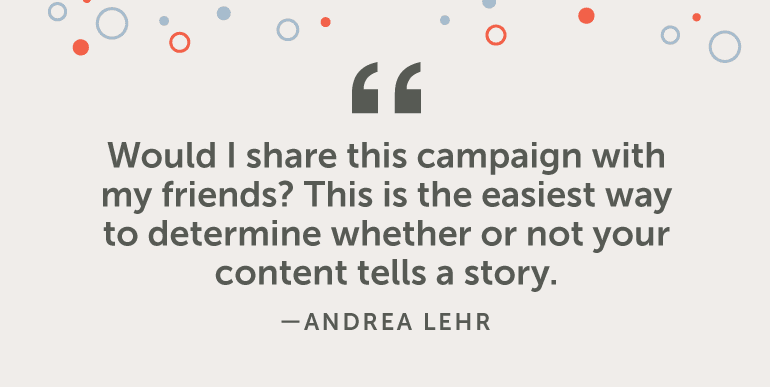 The comic book campaign, for instance, was created for a California-based organization that provides resources to individuals struggling with eating disorders, but the 1,300 pickups and 105,000 social shares indicate that the content reached well beyond its targeted audience – in large part because it allowed publishers to tell multiple stories.
For example, some readers were less concerned with a discussion on body image and instead focused their attention on general criticism of the project. “Superheros can’t save the world if they’re lounging around like the average American,” criticized a reader. These sentiments were shared in the comment section of a Spanish gaming site (whose audience probably had little interest in finding out more about eating disorders).
What these two placement prove, though, is that the pop culture theme helped the content resonate with more than one demographic. Yes, these characters don’t relate directly to eating disorders, but in the right context, they can connect issues about body image to a much larger audience.
The comic book campaign, for instance, was created for a California-based organization that provides resources to individuals struggling with eating disorders, but the 1,300 pickups and 105,000 social shares indicate that the content reached well beyond its targeted audience – in large part because it allowed publishers to tell multiple stories.
For example, some readers were less concerned with a discussion on body image and instead focused their attention on general criticism of the project. “Superheros can’t save the world if they’re lounging around like the average American,” criticized a reader. These sentiments were shared in the comment section of a Spanish gaming site (whose audience probably had little interest in finding out more about eating disorders).
What these two placement prove, though, is that the pop culture theme helped the content resonate with more than one demographic. Yes, these characters don’t relate directly to eating disorders, but in the right context, they can connect issues about body image to a much larger audience.
Use Humor to Tell Stronger Stories
Humorous content is a great way to drive stories, as emphasized through some of the headlines for the emoji campaign:- Study: Frequent Emoji Users Are Hornier Than the Rest of Us, New York Magazine
- Dear Mississippi, You’re Obsessed With Eggplant Emoji. Please Explain, Vocativ
- New Sex Emoji Study Shows That Eggplants Trump Bananas, New York Daily News
- Make an everyday routine funny: Some of the best content comes from building on shared experiences, and the same can be said for comedy. A great example is any Poo-Pourri campaign.
- Don’t be shy about self-deprecation: Any easy way to make people laugh while humanizing your brand? Make a joke at your own expense. For instance, JetBlue found a clever way to engage with a customer who thought their emails were coming on a little too strong (see below).

- Keep it simple: The more complex and complicated your humor is, the more likely it is to fall flat. Carlsberg, for instance, has been using their cheeky tagline, “Probably the best beer in the world since 1973.

Go Out and Create Some Viral Content
In an age where viral content seems to come and go within a matter of minutes, it’s unlikely that your content will reach “The Dress” levels of internet immortality. The good news, though, is that more studies continue to prove that a content’s viral potential isn’t a matter of luck. Remember that there are many factors that influence what we share online, and the SUCCESs model serves as a great blueprint when outlining your next content marketing campaign. The key ingredients for a viral hit include credibility, an emotional connection, and the ability to tell more than one story–along with an idea that isn’t too vanilla and offers a new, often debatable perspective.Follow the SUCCESs model to create more viral content
Click To Tweet

